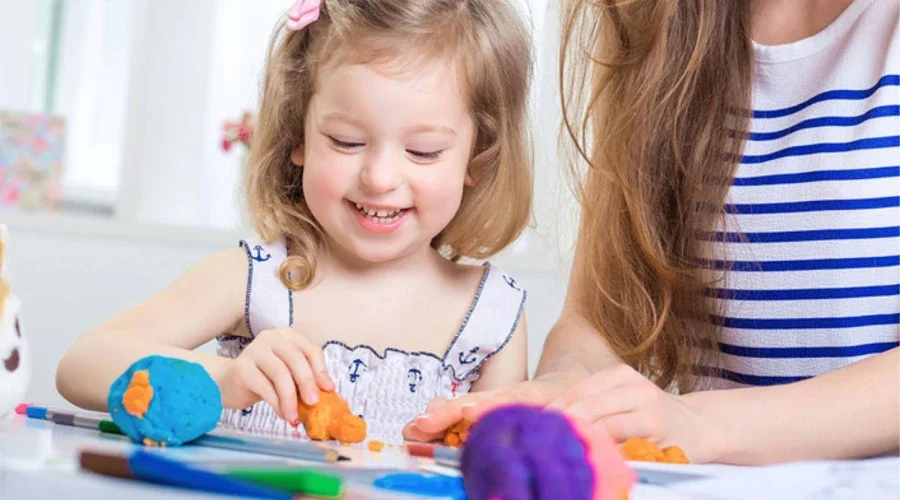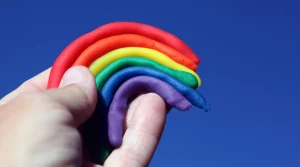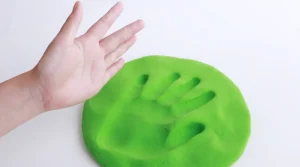
What Is the Science Behind Playdough? Uncover the Chemistry
What makes playdough soft, stretchy, and long-lasting? Explore the chemistry and physics behind this classic sensory material in a fun way.
#1 Toys Manufacturer in China. WhatsApp: +86 180-0088-4063. Email: [email protected]
#1 Toys Manufacturer in China. WhatsApp: +86 180-0088-4063. Email: [email protected]

Discover how playdough can spark curiosity and enhance STEM learning for kids! Ready to explore creative ways to make education fun and engaging? Dive in now!
STEM education stands for Science, Technology, Engineering, and Mathematics education. It is an approach to learning and development that integrates these four disciplines into a cohesive and interactive learning experience.
Understanding physical properties: When children mold, stretch, and shape playdough, they learn about its texture, flexibility, and durability. They see firsthand how pressure and temperature can change its form. These simple activities lay the groundwork for understanding more complex scientific concepts in the future.
Exploring chemical reactions: Making playdough from scratch is a hands-on way to introduce kids to chemical reactions. Combining ingredients like flour, water, salt, and cream of tartar shows how different substances interact to create a new material. Watching the mixture change as it’s heated demonstrates how chemical reactions work, making science both fun and memorable.
Integration with technology tools: For example, using a 3D printer to create playdough molds combines creativity with cutting-edge technology. Kids can design their own shapes on a computer and watch as the printer brings their ideas to life. This blend of play and technology helps children see the potential of tech in everyday life.
Encouraging early tech literacy through play: Simple activities like creating stop-motion animations with playdough characters can introduce children to basic tech concepts. These playful experiences build a foundation for more advanced technological skills, making learning both engaging and approachable.
Basic engineering principles: Kids can experiment with building various structures, such as bridges or towers, learning about stability and balance in the process. They discover which shapes hold up best and how to distribute weight evenly. These hands-on projects teach important engineering concepts in a fun and tangible way.
Problem-solving and iterative design: When a playdough structure collapses, kids can analyze what went wrong and try different solutions. This process of trial and error helps them understand that failure is a part of learning and that persistence leads to improvement.
>> Playdough Tools & Accessories
Teaching basic math concepts: Children can roll it into different shapes to learn about geometry. Measuring and comparing pieces of playdough helps them understand size and volume. These hands-on activities make abstract math ideas more concrete and understandable.
Enhancing spatial awareness and geometry understanding: Kids learn to visualize shapes and how they fit together. They can create patterns and explore symmetry, developing a strong sense of spatial relationships. These skills are crucial for success in math and related fields.
By integrating playdough into STEM education, we can make learning interactive and enjoyable. This approach not only teaches important concepts but also fosters a lifelong love of discovery and innovation. So, grab some playdough and start exploring the fascinating world of STEM today!
Creating volcanoes: Kids can shape playdough into a volcano, then use baking soda and vinegar to simulate an eruption. This activity demonstrates chemical reactions and teaches about volcanic activity.
Mixing colors: Children can combine different colors of playdough and see how new colors are formed. This simple activity helps them understand color theory and the basics of physical changes.
Building bridges and towers: In engineering, playdough is perfect for building bridges and towers. Kids can use it to create various structures, testing different designs to see which ones are the strongest. This hands-on activity teaches basic principles of engineering and physics.
Designing functional models: Playdough can also be used to design functional models, like vehicles or buildings. Children can experiment with different shapes and structures, learning how design impacts functionality. This encourages creativity and problem-solving.
Counting and sorting playdough pieces: Playdough is useful for math games as well. Kids can roll it into small pieces and practice counting and sorting them. This activity helps with number recognition and basic arithmetic.
Creating patterns and sequences: Children can make sequences of shapes or colors, learning about order and repetition. This enhances their understanding of patterns and logical thinking.
Using playdough in robotics and coding activities: In technology, playdough can be integrated into robotics and coding activities. Kids can build simple robots using playdough and basic electronic components. This introduces them to robotics and circuits in a fun and engaging way.
Incorporating digital tools for playdough design: For example, children can design shapes on a computer and use a 3D printer to create playdough molds. This merges traditional play with modern technology, teaching kids about digital design and fabrication.
At Greenfield Elementary, teachers use playdough for hands-on science experiments. Students create models of the solar system, learning about the planets and their orbits. This interactive approach makes astronomy fun and accessible.
And at Oakwood Middle School, playdough is used in math classes. Students mold playdough into geometric shapes, which helps them understand concepts like volume and surface area. This practical method turns abstract ideas into tangible learning experiences.
Teachers and students alike praise the use of playdough in STEM education. Mrs. Thompson, a third-grade teacher, says, “Playdough makes science lessons come alive. The kids are more engaged and excited to learn.” Her students agree. Jenny, an 8-year-old, shares, “I love using playdough in class. It’s like we’re playing, but we’re also learning so much.”
A study found that students who used playdough in science classes scored 20% higher on tests compared to those who used traditional methods. The study concluded that hands-on activities like playdough help students grasp complex concepts more easily.
Further data shows improved learning outcomes with playdough use. A survey of 100 schools found that 85% of teachers observed better problem-solving skills in students who used playdough for STEM activities.
Additionally, 90% of students reported that they enjoyed learning more when playdough was involved. These findings highlight the positive impact of incorporating playdough into STEM education.
Start with simple activities like creating models of plants and animals for biology lessons. For physics, students can build ramps and test how different shapes of playdough roll down. In math, use playdough to form various geometric shapes, teaching concepts like area and volume.
Keep playdough in airtight containers to prevent drying. Set up designated playdough stations to keep the mess contained. Assign small groups to each station, ensuring every student gets hands-on experience. Cleaning tools like plastic mats and aprons can make cleanup easier.
Parents can use playdough at home to make STEM learning fun. Try simple experiments like mixing baking soda into playdough and adding vinegar to create fizzy reactions. Build basic structures like bridges and test their strength by placing small objects on them. Create math games by rolling playdough into different shapes and counting them.
Siblings can work together on projects, fostering teamwork. Parents can join in, guiding their children through activities and explaining the science behind them. For instance, while making playdough volcanoes, parents can explain how real volcanoes work. These activities create bonding opportunities while promoting STEM education.
At Maplewood Elementary, Mrs. Riley introduced playdough volcanoes to her fourth-grade science class. Each student crafted their own volcano, and the excitement grew as they watched the baking soda and vinegar react, simulating an eruption.
“It’s like magic!” one student exclaimed, eyes wide with wonder. This hands-on experiment not only made the lesson memorable but also helped the students understand chemical reactions in a fun and engaging way.
>> Top 5 Playdough Sets for Creative Play
At home, the Johnson family enjoys playdough nights. They build bridges, create patterns, and even design little robots with playdough and simple electronics. These activities bring the family together, making learning a shared adventure.
By incorporating playdough into both classroom and home environments, educators and parents can make STEM education more engaging and enjoyable.
Playdough is a powerful tool for enhancing STEM education, making learning interactive and enjoyable.
Educators and parents can use playdough in classrooms and at home, making STEM subjects fun and engaging for children.
References
Playdough encourages experimentation and hands-on learning. When children build structures or create models, they often encounter problems that require creative solutions. This process helps develop critical thinking and problem-solving skills essential for STEM subjects.
Yes, playdough can introduce basic coding concepts. For example, children can create playdough shapes to represent different coding commands. Sequencing these shapes can mimic the logic of programming, helping kids understand the fundamentals of coding in a tactile and visual way.
Activities such as building 3D models, designing maps, and creating patterns with playdough enhance spatial awareness. These tasks help children visualize and manipulate shapes in space, which is crucial for fields like geometry and engineering.
Playdough can model various environmental science concepts, such as ecosystems, food chains, and water cycles. Children can create dioramas of habitats, use playdough to represent different animals and plants, and simulate environmental changes, providing a hands-on way to learn about nature.
Generally, playdough is safe when used under supervision. However, ensure that the playdough is non-toxic and that children do not ingest it. Also, be mindful of any allergies to ingredients. Always encourage good hygiene, like washing hands before and after play, to keep the experience safe and enjoyable.
More Related...

What makes playdough soft, stretchy, and long-lasting? Explore the chemistry and physics behind this classic sensory material in a fun way.

Mixing playdough and slime: science, textures, and creative fun for kids. Learn what happens when these sensory materials come together!

Maximize your playdough and air dry clay’s freshness with easy storage tips and tricks that keep them soft and ready to use.

Playdough is a good craft toy, especially suitable for children aged 3+ to develop hands-on skills. Now let’s make a cute caterpillar craft.

Our team will answer your inquiries within 48 hours.
Copyright © 2025 GuangDong AKIA Technology Co,. Ltd. All Rights Reserved